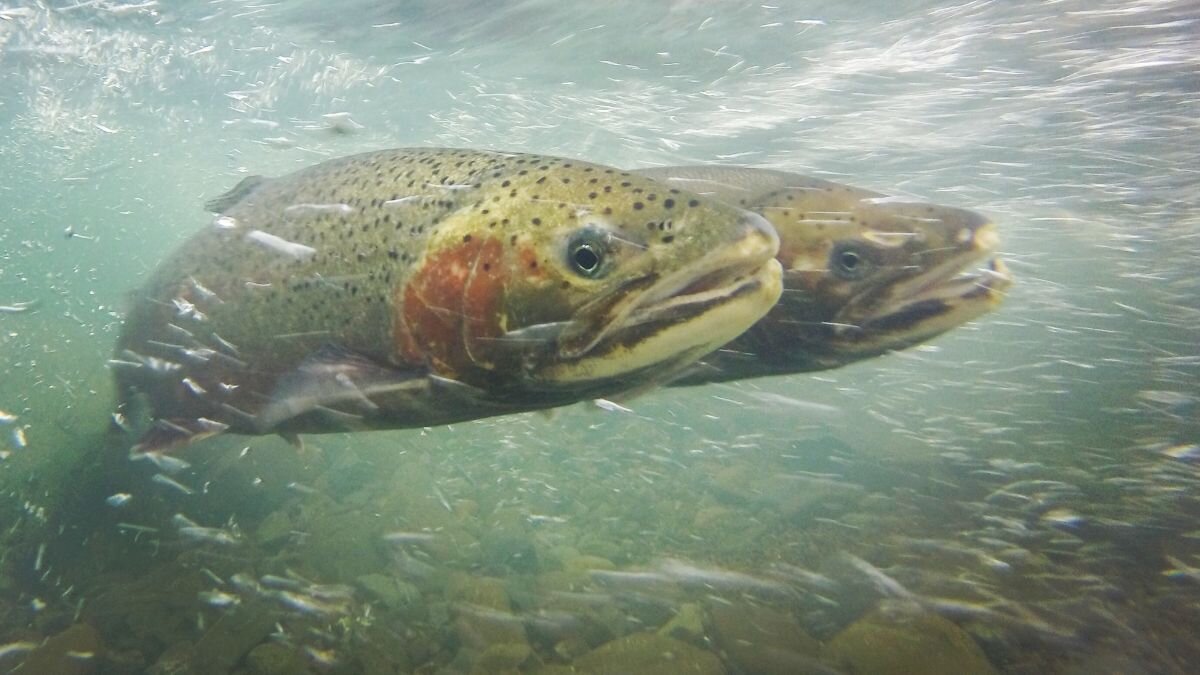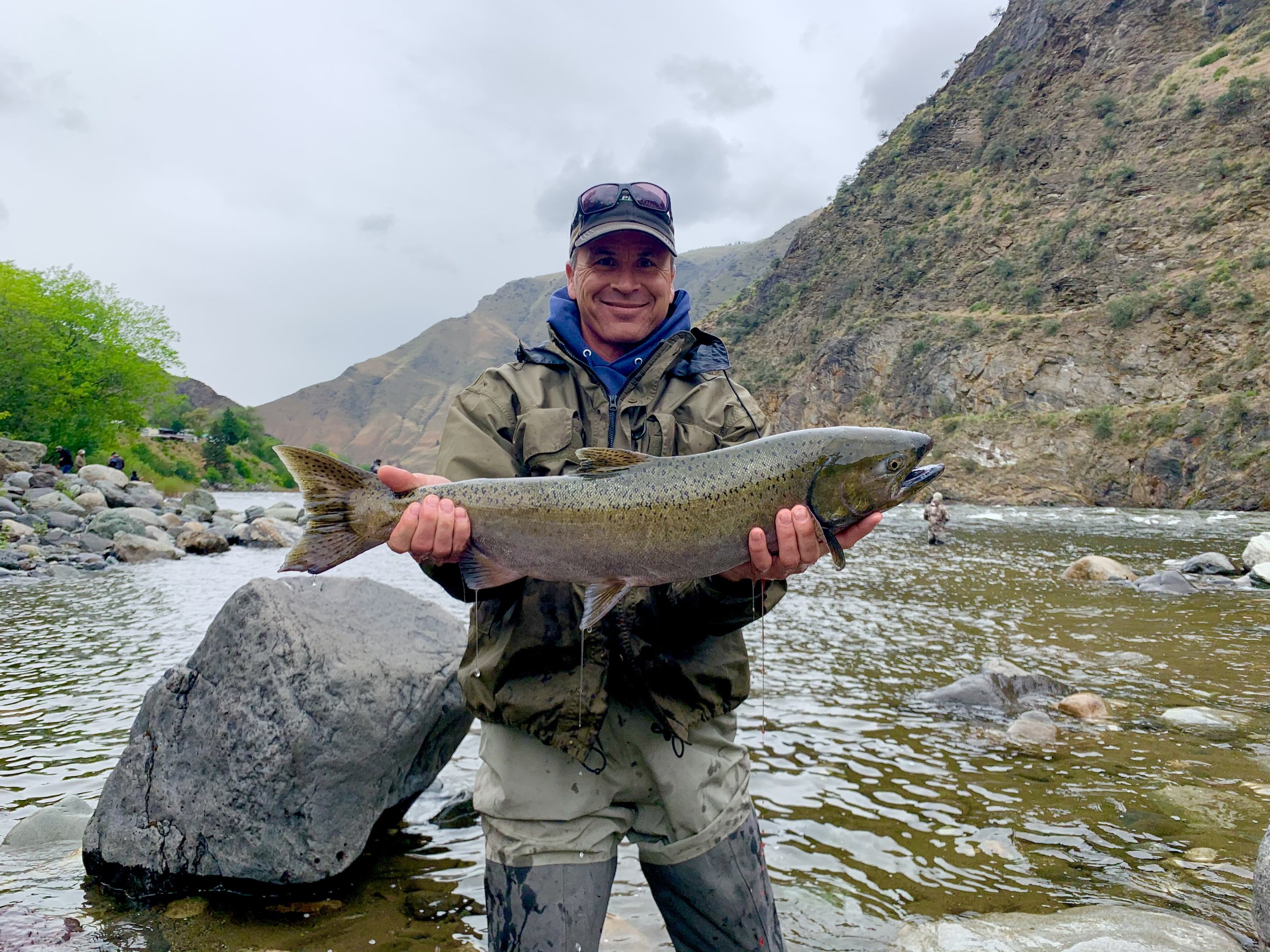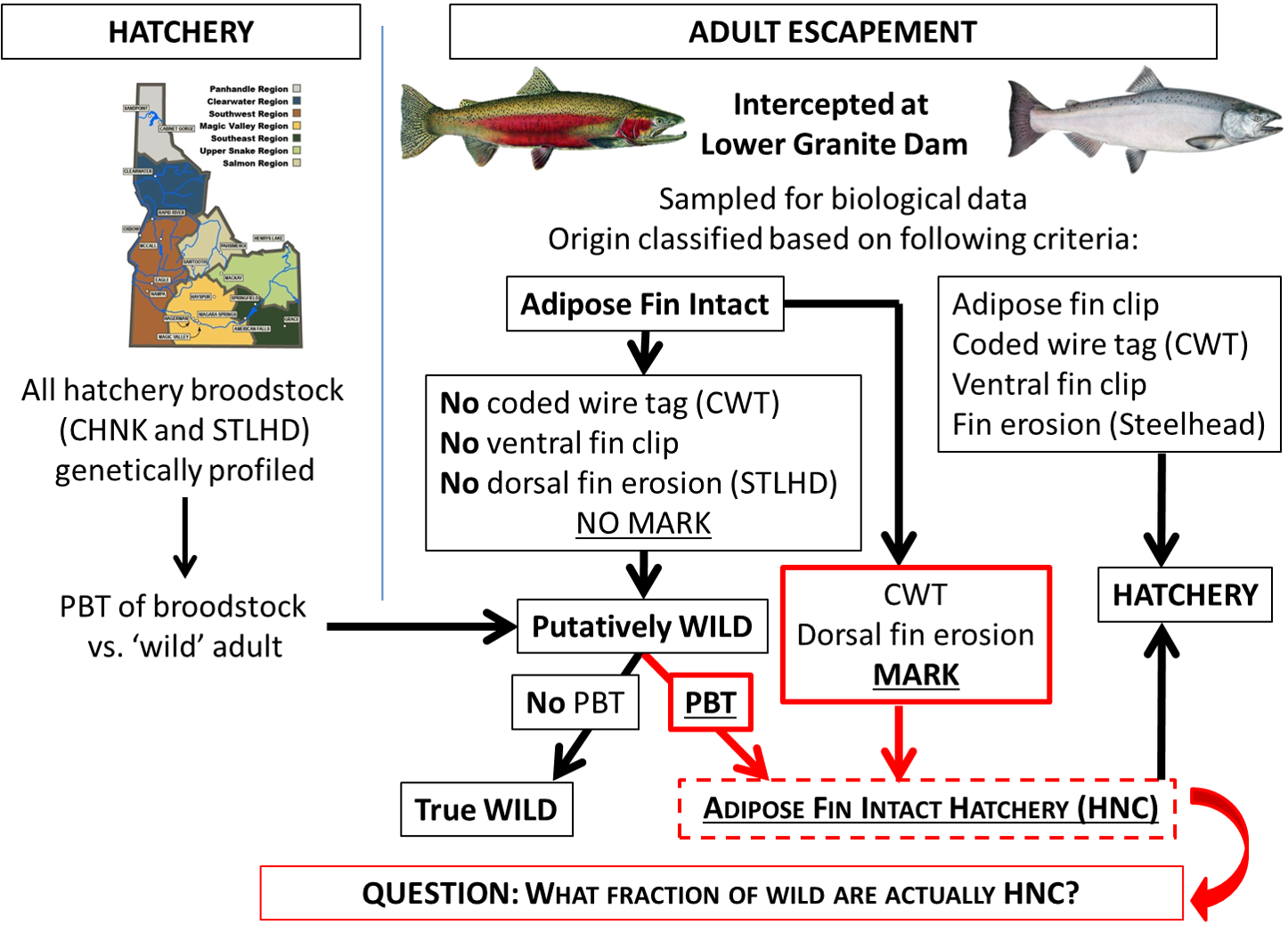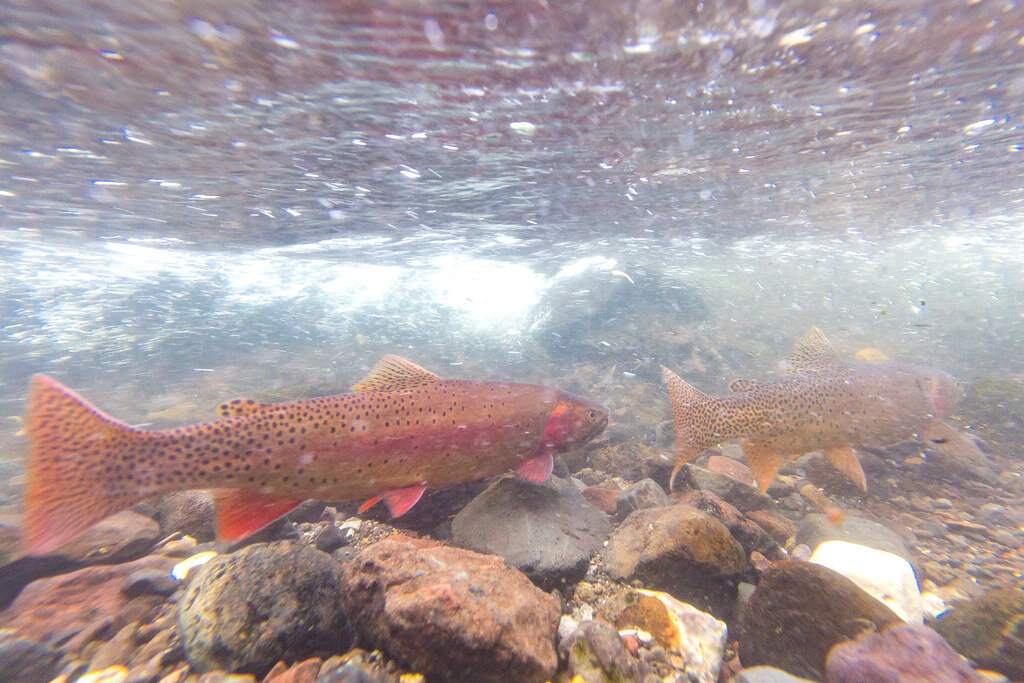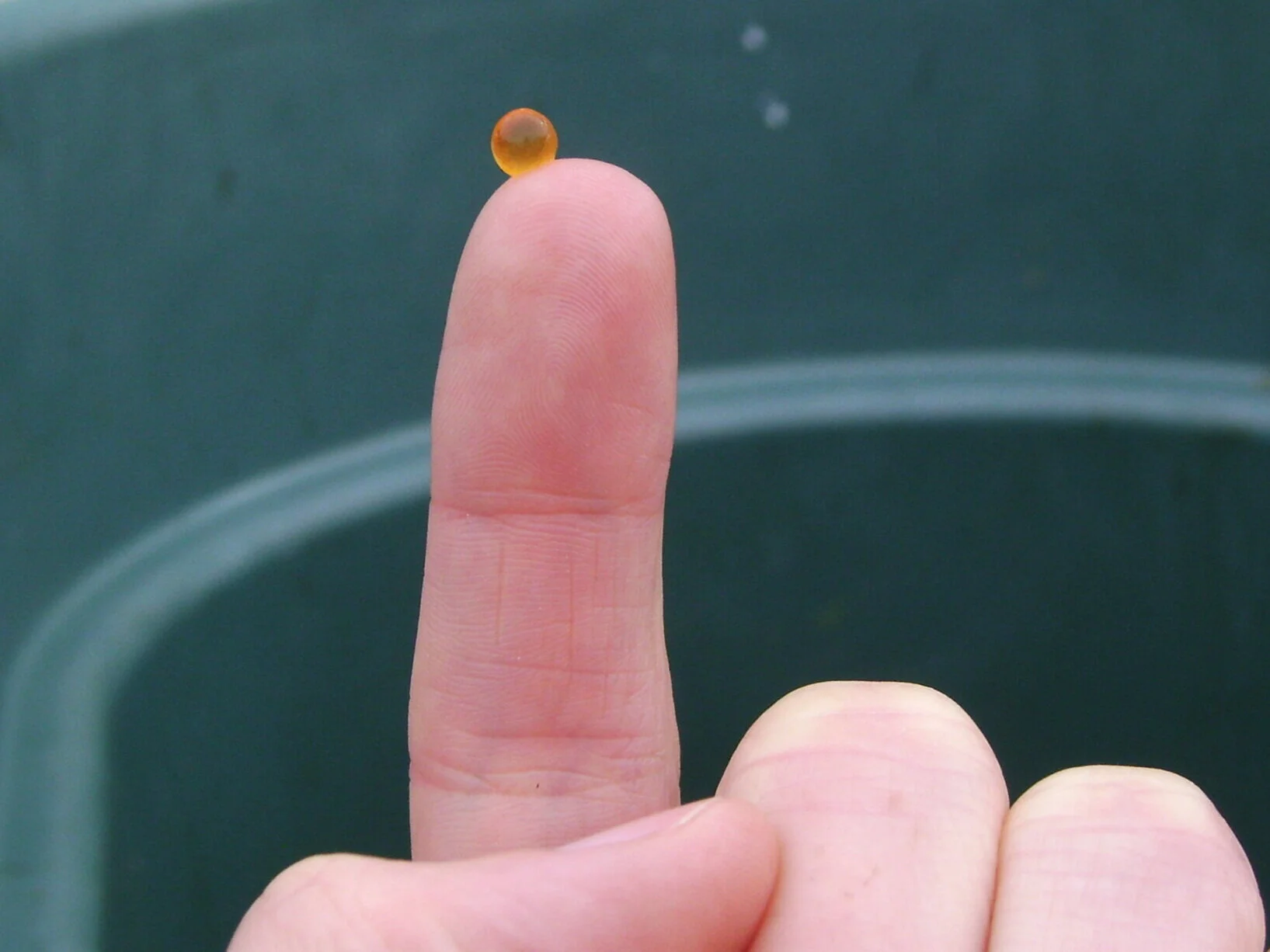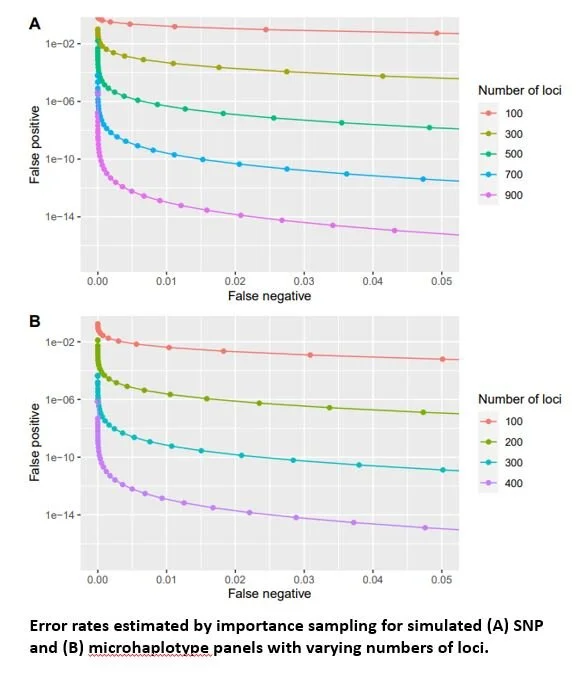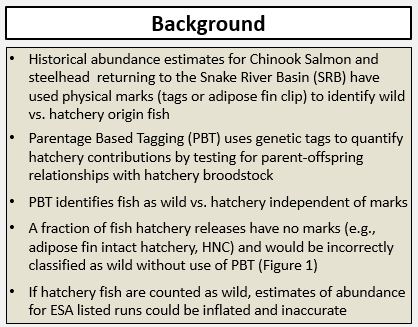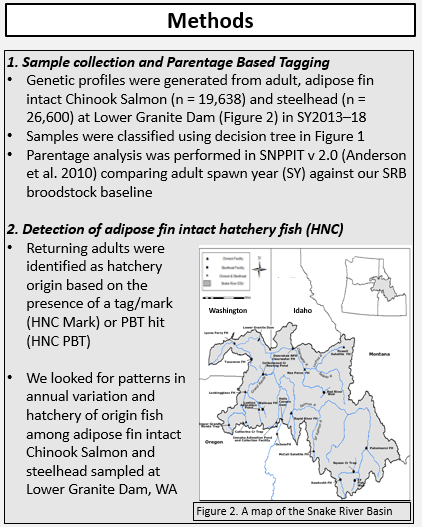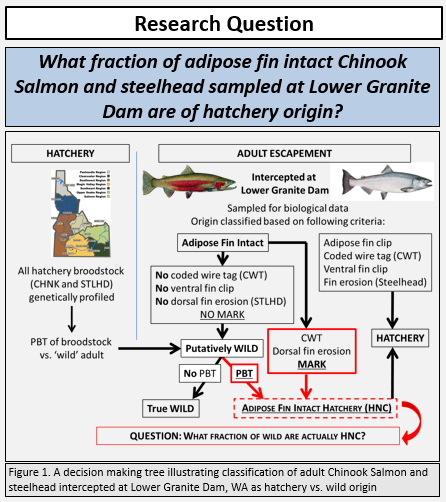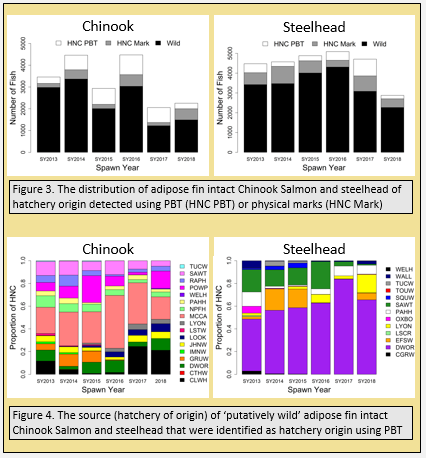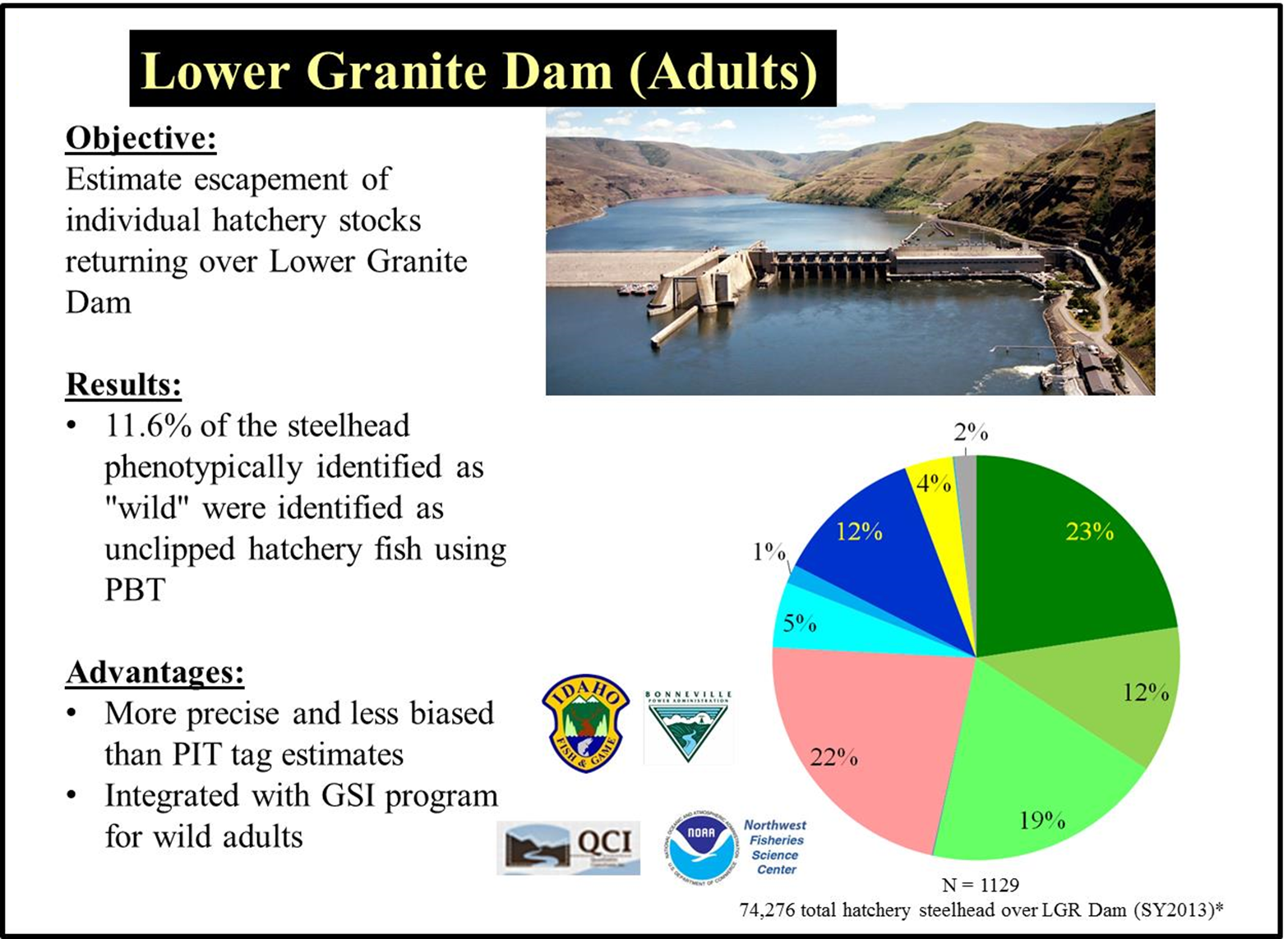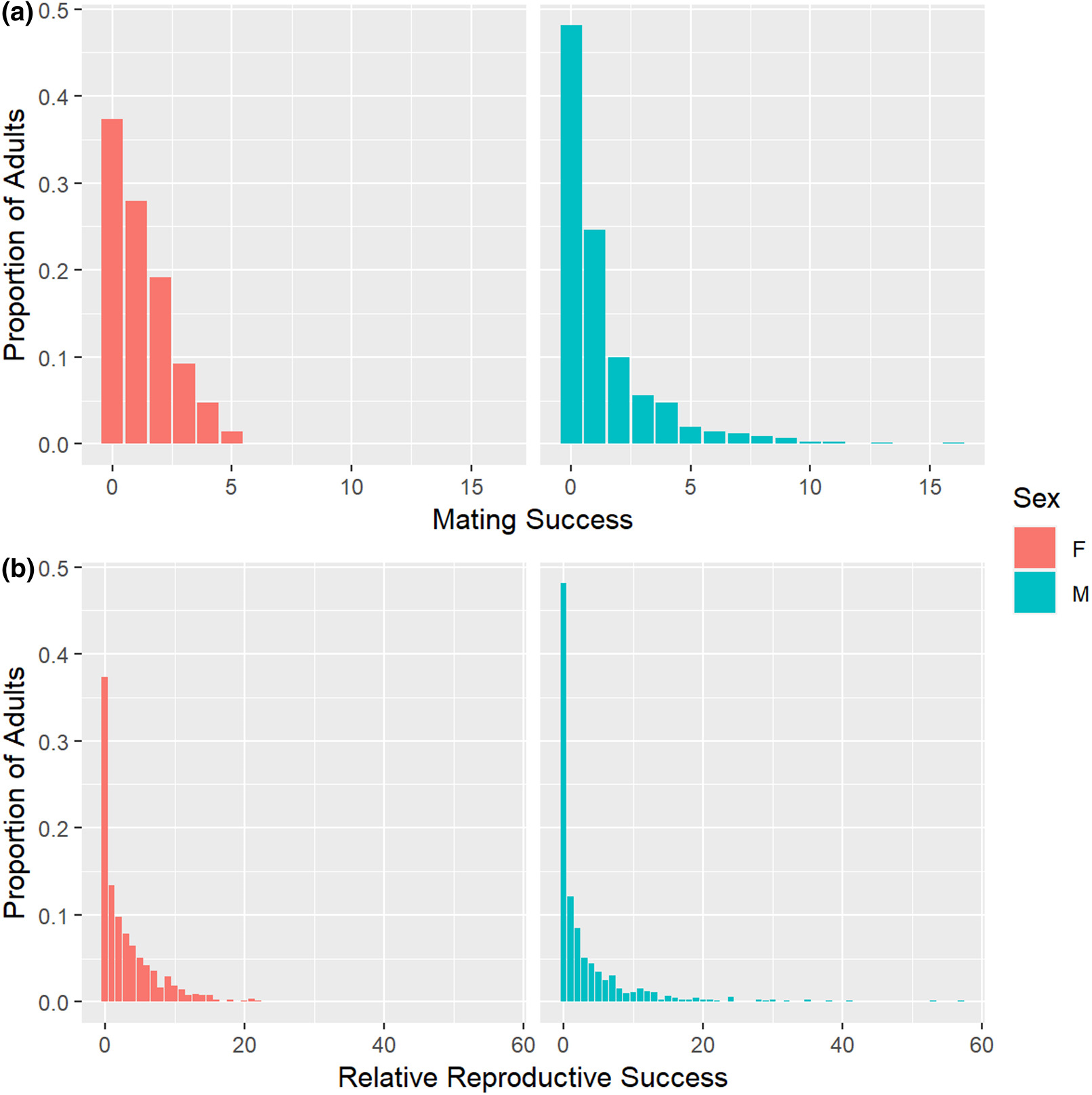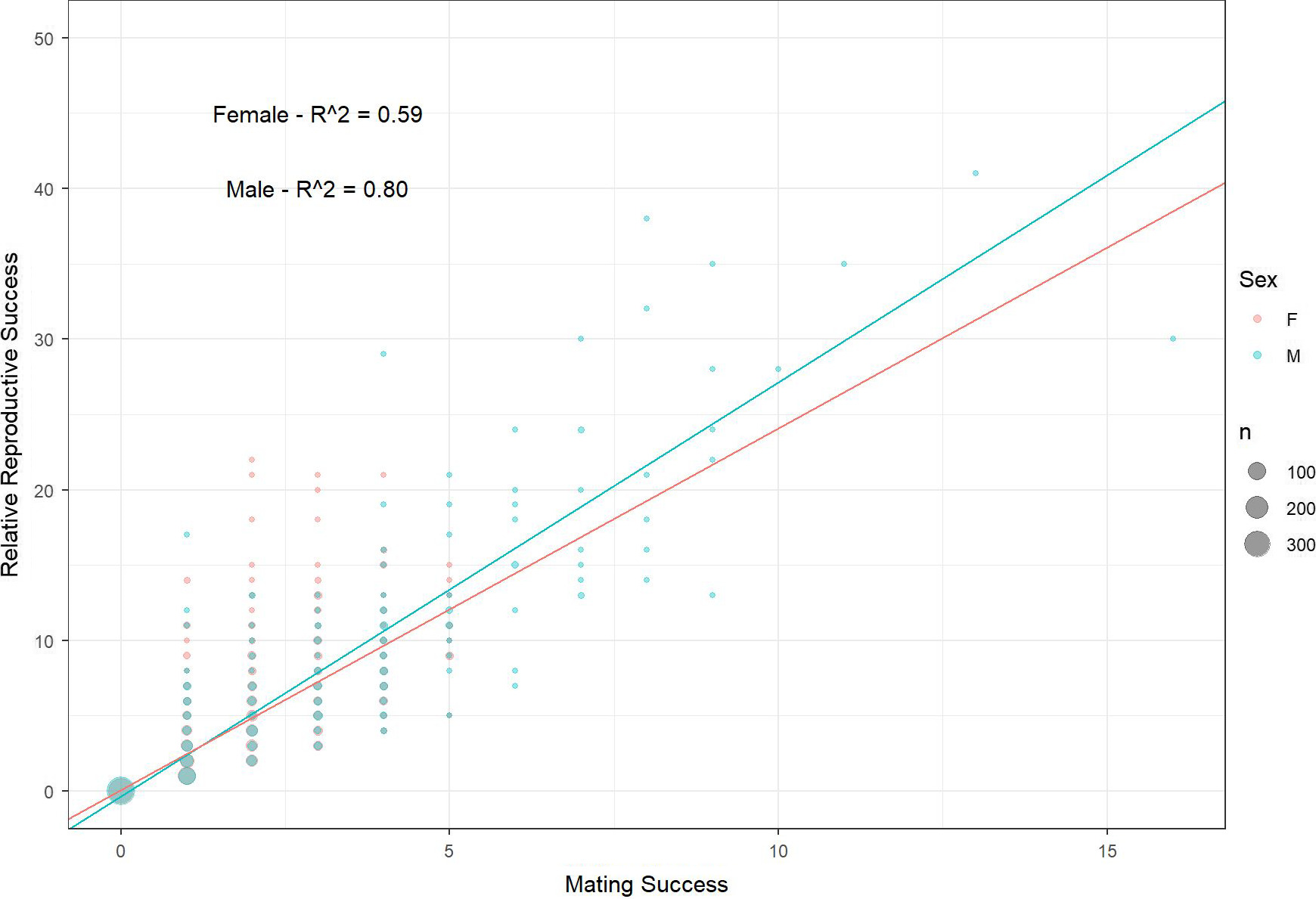BPA funded project (2010-031-00).
Project Leader: Tom Delomas, thomas.delomas@idfg.idaho.gov.
Parentage Based Tagging (PBT) was implemented by IDFG (in collaboration with CRITFC) in 2010 to address gaps in RPA action 50 – Fish Population Status and Monitoring. It was initiated as a proof of concept study to verify the accuracy and utility of this genetic technology for population monitoring. Following empirical testing and demonstration, managers incorporated PBT for long-term status and trend monitoring of Snake River steelhead and Chinook Salmon stocks This project genotypes approximately 20,000 samples annually to create PBT parental genetic baselines for hatchery steelhead and Chinook salmon in the Snake River basin. This includes ~1,500 Fall Chinook salmon from the Nez Perce and Lyons Ferry Fish hatcheries. In doing so, it effectively, permanently genetically marks ~12 million smolts, per species, per year. This project works closely with another BPA funded project (CRITFC: 2008-907-00) to ensure that genetic marker sets used in the Columbia River basin are standardized, providing unprecedented genetic tools for managing wild and hatchery stocks in the basin, with Genetic Stock Identification techniques segregating adult wild runs by stock of origin, and Parentage Based Tagging technologies identifying the stock and age of sampled hatchery fish.
Currently this PBT baselines produced by project 2010-031-00 are used annually:
-To monitor genetic diversity, genetic differentiation, and effective population size of all hatchery stocks within the Snake River basin (Steele et al 2014, 2015, 2016). Importantly, this project, used in conjunction with the GSI project, estimates the degree of genetic divergence between every hatchery stock within the Snake River basin and associated wild stocks.
-To monitor the proportion of unclipped adult hatchery steelhead returning over Lower Granite Dam, thus improving wild escapement estimation. For example, in SY2015 Powell et al (2017) estimated that 26.7% of the Chinook Salmon crossing Lower Granite Dam on the Snake River basin that had been phenotypically identified as wild, were actually unclipped hatchery fish identified using PBT. Similarly, for SY2015, 6.0% of the steelhead crossing Lower Granite Dam on the Snake River basin that had been phenotypically identified as wild, were actually unclipped hatchery fish identified using PBT.
-To monitor the harvest of all Snake River hatchery stocks, including ESA-listed B-run hatchery steelhead in the lower Columbia River sport and tribal fisheries, and within Idaho (Warren et al 2016, Byrne et al 2016).
